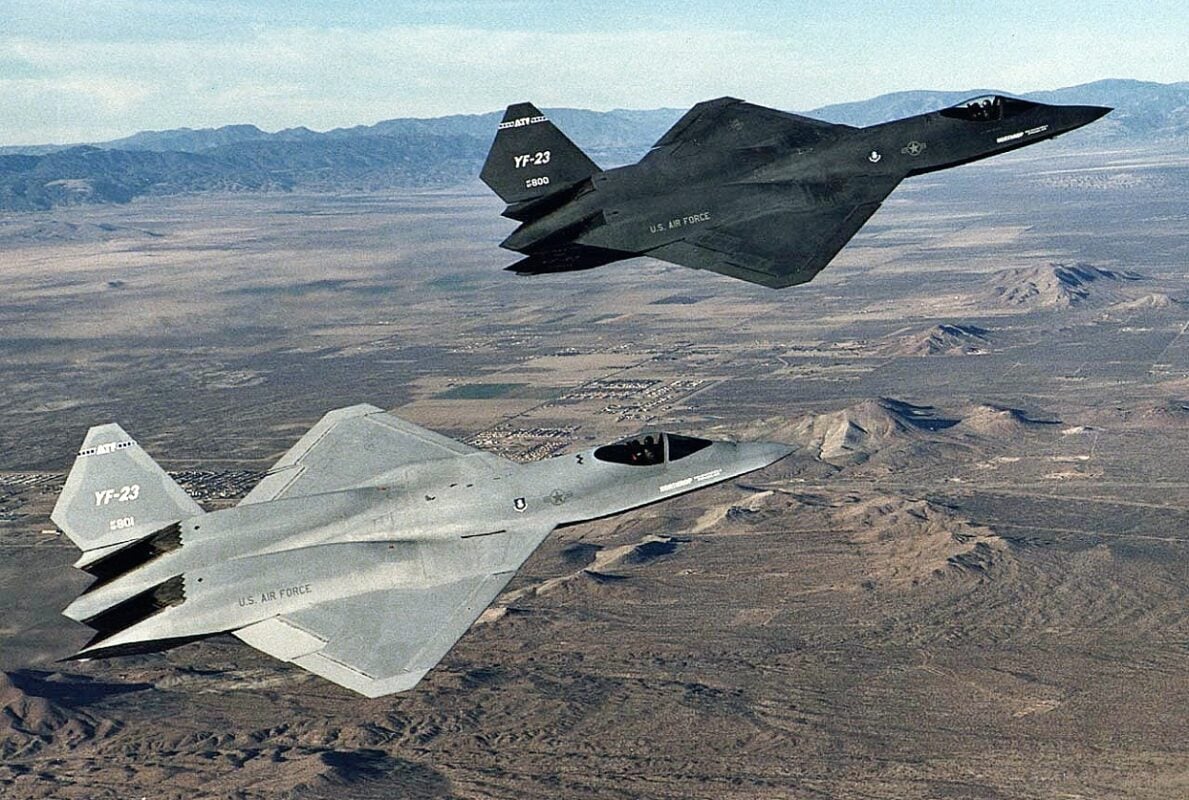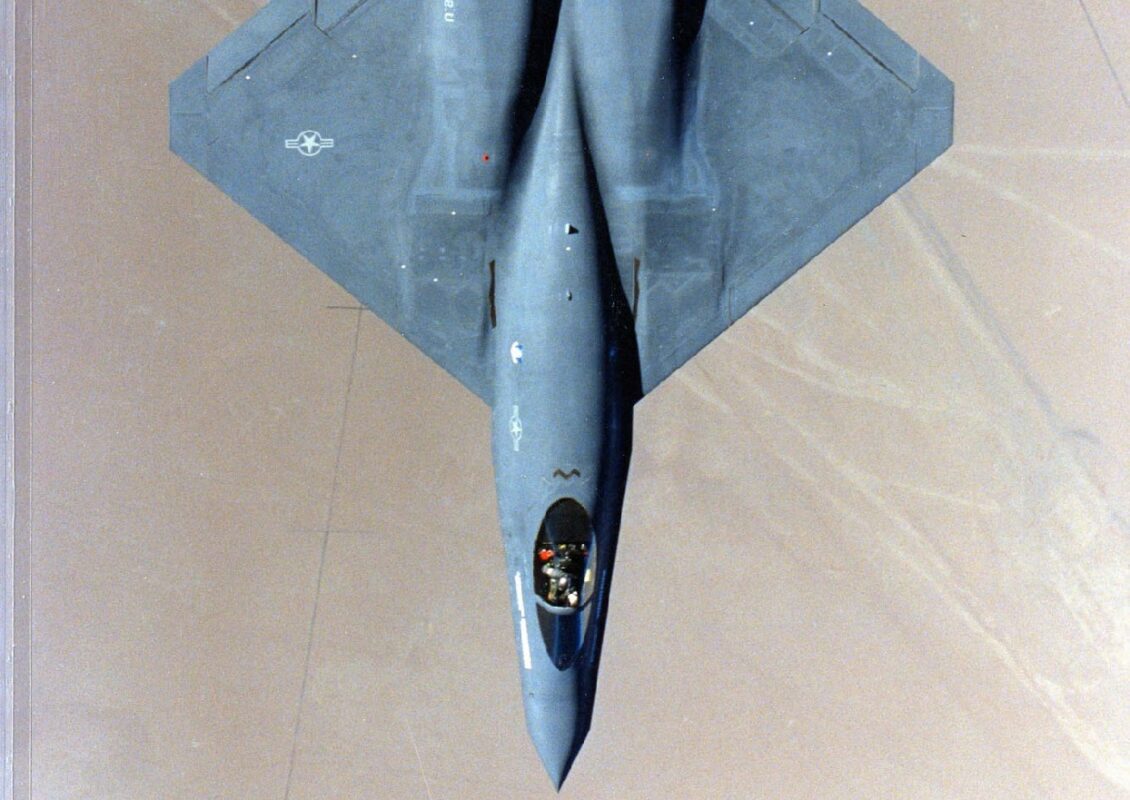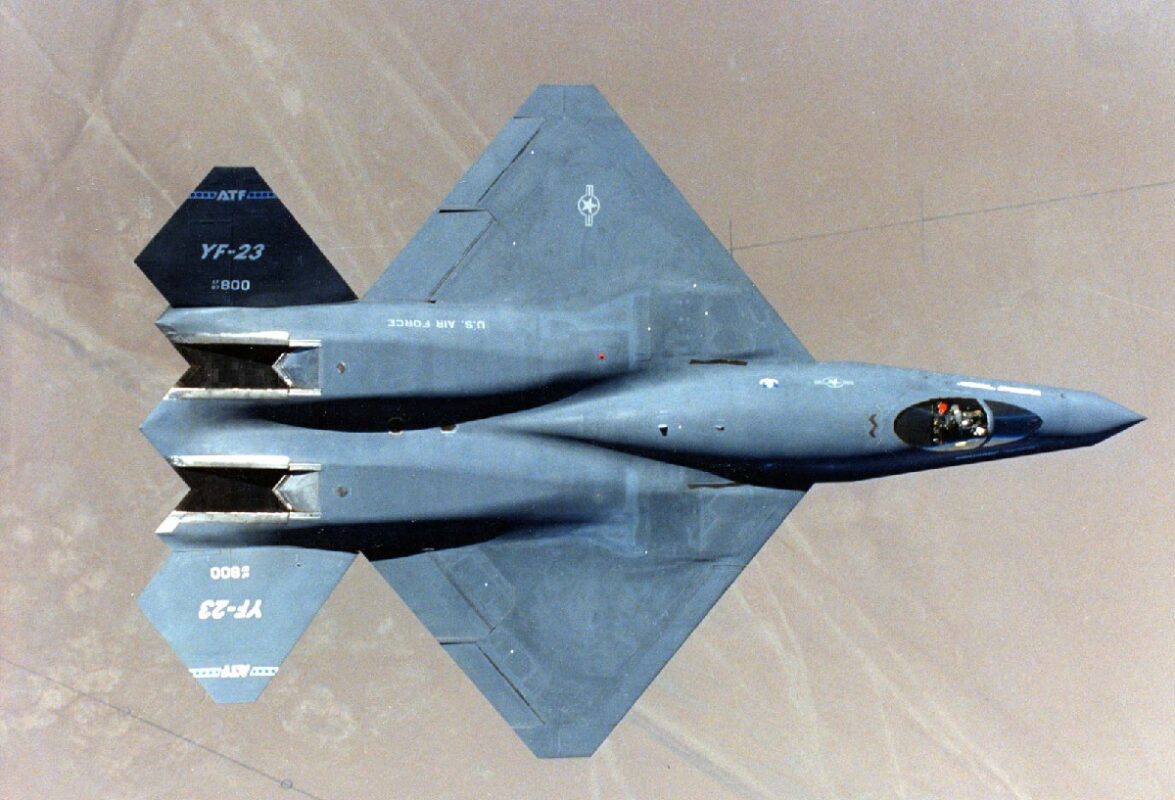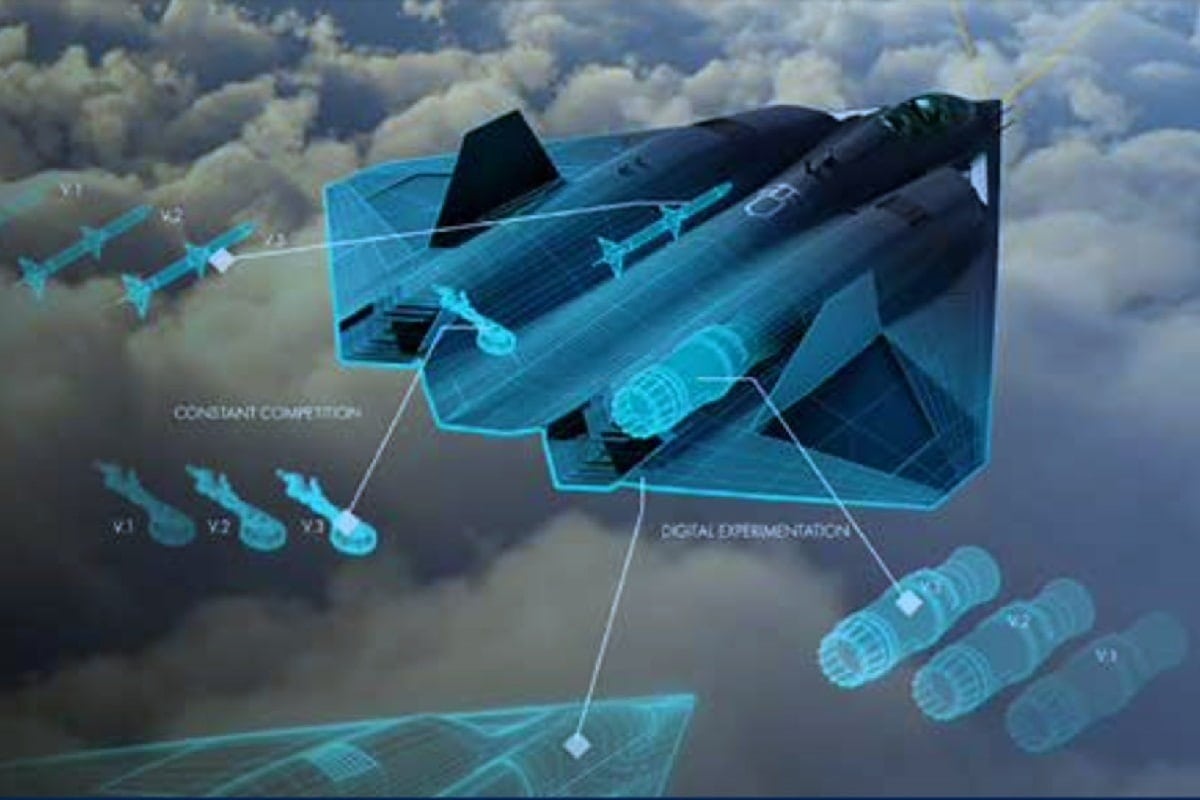NGAD: What Could End Up Being the US Air Force’s New 6th Generation Fighter, Explained – An awfully lame-sounding official report out of the U.S. Air Force has come accompanied by brand new concept art of the Air Force’s next air superiority fighter, which is being developed under the Next Generation Air Dominance (NGAD) program.
This new fighter is expected to fill the air superiority role currently occupied by America’s highly capable 4th generation F-15, as well as the advanced, but increasingly rare, F-22 Raptor.
Last September, the U.S. Air Force shocked the aviation world when they announced that they not only had a design in mind for their Next Generation Air Dominance (NGAD) fighter, they’d already built a prototype and flown it. While any other details about what is expected to be among–if not the–first 6th generation fighter remain sparse, aviation journalists and pundits have largely come to assume that the prototype that was tested likely didn’t actually represent a mature aircraft design. It seems likely instead that an aircraft intended to serve as a technology demonstrator for different systems intended for the next generation jet is what actually took to the sky last summer.
Despite the likelihood that the Air Force doesn’t yet know what the NGAD fighter will really look like, there can still be some worthwhile information to glean from official artist’s renderings and their accompanying documentation. Last year, coinciding with the Air Force’s NGAD test flight announcement, the Air Force released a graphic for its 73rd birthday depicting an unusual triangular aircraft that looks nothing like any operational fighter in today’s force. To be fair, it’s entirely feasible that this concept art was influenced by previous concept art for 6th generation fighters released by firms like Lockheed Martin, but some still wondered if the timing of the NGAD announcement and artwork were intentional.
A few months back, the Air Force released its biennial Acquisition report covering fiscal years 2019 and 20. While not exactly the sexiest fare to come out the branch responsible for the world’s most potent technological advances of recent decades, the report outlines the Air Force’s 60+ ongoing acquisition programs–tech the Air Force hopes will allow it to maintain its edge over gaining adversaries in China and Russia in the years to come.
The NGAD program is listed on page 28 of the report, along with some very interesting artwork.
The image does bear some similarities to the image released last September, in that both fictional aircraft seem to have adopted a triangular or wedge shape with no traditional tail. While both the F-35 and F-22 have fairly traditional tail sections, despite their stylized stealth-friendly edges, there is precedent for a tailless stealth fighter. Northrop Grumman, the firm behind the B-2 Spirit and forthcoming B-21 Raider, had a fighter competing against Lockheed Martin for the last air superiority fighter contract that ultimately ended up going to Lockheed’s F-22. That aircraft, dubbed the YF-23 Black Widow II (see photos below), adopted a nearly-tailless design as well.

Image: Creative Commons.

Image: Creative Commons.

Top view of the YF-23, showing the trapezoidal wings and separation between the forward fuselage and engine nacelles.
The YF-23 performed extremely well in the competition, even edging the Raptor out in places like stealth and range. To this day, some contend that the YF-23 would have been the superior fighter. You can read our full coverage of this highly capable fighter in our full write-up on it here.
Northrop Grumman is already working on the Air Force’s next stealth bomber, the B-21 Raider, and would likely pursue an opportunity to compete for the NGAD contract with an updated but similar design. Would this explain the subtle similarities in both NGAD artist’s renderings? Meh, probably not–but it could suggest that whoever is building America’s next stealth fighter is leaning toward a design that also forgoes a prominent tail.
Zooming in on the image doesn’t offer much in the way of additional details. Three air-to-air missiles are shown off to the left, suggesting the NGAD fighter will carry its weapons internally, which is practically a requirement for minimizing the fighter’s radar return. Below that, to the rear of the aircraft, a device with the caption “constant competition” is likely meant to indicate electronic warfare countermeasures. To the right of the fighter are three diagrams showing the jet engines in the aircraft that have the phrase “digital experimentation” accompanying them. This is likely a nod to the Air Force’s recent shift toward leveraging more digital testing than ever before for its aircraft.
Finally, a second aircraft diagram can be seen just behind the fighter, which may simply be similar to the other repetitive designs seemingly showing a progression of technology, but could also represent the Air Force’s repeated statements suggesting the NGAD program won’t produce one fighter, but rather a whole family of systems.
The 2019/2020 Acquisition report also offers a brief summary of the NGAD program, what it intends to do, and why it’s progressing differently than previous “monolithic” fighter programs like the F-35 Joint Strike Fighter. Despite widely being considered the most capable tactical aircraft on the planet, the F-35 has also suffered from repeated setbacks and budget-busting issues that have earned it a reputation as the very pinnacle of bad acquisition practices.“Next Generation Air Dominance is a family of capabilities that enable Air Superiority in the most challenging operational environments by enforcing the development of pillars of digital engineering, agile software development, and open architectures,” the report reads.
It goes on to point out that the aircraft born of the NGAD program will be meant to operate alongside previous stealth aircraft like the aforementioned F-35 Joint Strike Fighter and the NGAD’s direct precursor, the F-22 Raptor. That clarification is important, due to recent statements by Air Force officials that would seem to undermine the F-35 program’s supremacy in the Air Force’s priority list.
“Designed to complement the F-35, F-22, and partner forces in the Air Superiority role, Next Generation Air Dominance is an advanced aircraft program for development of penetrating counter air platforms with multi-domain situational awareness, agile resilient communications, and an integrated family of capabilities.”

